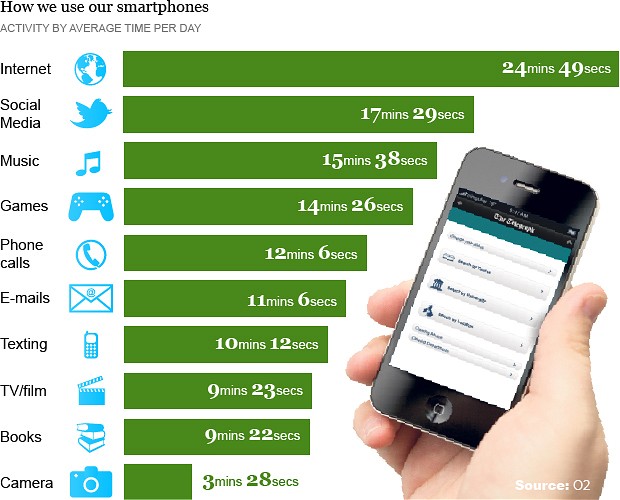Top Online Marketing Trends for 2013
With 2012 in the books, and a ton of changes in the online landscape, what does 2013 have in store?

Local & Mobile
Every 2013 trend list is talking about mobile, and for good reason; delivering relevant local/mobile results has never been more important. Is your Google+ Places page claimed and optimized? Is your website mobile friendly or built with responsive design? Does your SEM campaign target users on a mobile device AND with mobile calls to action? With internet being the number one activity users do on their mobile phone, failure to think about mobile could be costly.
Content is (no surprise here…) KING!
Yeah, yeah, you’ve heard this one a million times. Google continues to crack down on duplicitous SEO practices, thus a content marketing strategy is a necessary part of your online marketing plan. Creating compelling, valuable, shareable content reduces your reliance and investment on traditional media and allows you to own more of the conversation. It’s also a smart way to position yourself as a thought leader, generate leads, help your SEO efforts, and demonstrate your expertise. Whether it’s blogs, videos, newsletters, webinars, ebooks, whitepapers, or social media – having a plan on how you’re going to create content ensures that it’s strategic and allows you to meet your business objectives.
By the way, your SEO provider should be thrilled that you want to talk about a content marketing strategy with them. (If your’s isn’t, or doesn’t know what you’re talking about… find a new provider.)
User Experience
Let’s say you play in an ultra competitive industry and you’re not willing to pay north of $20 per click for SEM. Or maybe you compete in a niche market and your daily website traffic is smaller than the number of family members at Christmas dinner. Whatever the case, your funnel size is small enough that a “fill the funnel” strategy just isn’t feasible. It’s time to focus on user experience. (You should be doing this anyway, but it’s doubly important for organizations like those I’ve mentioned above.) Instead of getting say 10% of website visitors to take a particular action, you need that number to be higher.
Obsessing over user experience isn’t just for niche players, or online marketers for that matter. One of my favorite surprises this past year as a consumer was the purchase of a Dyson vacuum. Before the vacuum even arrived, I received an email welcoming me to the ‘family’. I also get a monthly email reminder about washing the filter, in order to improve performance and longevity of my vacuum. Every single interaction I’ve had with Dyson has been consistently fantastic. Safe to say, I’ll be a customer for life.
Multi-Channel Attribution
Effective marketing requires the right mix of tactics, to the right audience, at the right time. But when all is said and done, how do you know what contributed to that conversion or sale? Multi-channel attribution allows you to better understand your marketing efforts. You’re able to see a complete list of steps that consumers take before converting and use this information to make strategic budgeting decisions. It gives you macro-level detail about channel effectiveness as well as micro-level detail; which keywords or ad placements.
Which ad did someone click on to arrive at your website? When did they come back? How did they come back? Understanding the path to purchase is an incredibly powerful tool, one that will increasingly be part of the conversation that we have with you.
Those are my top trends for 2013. What are you focusing on in the coming year?
